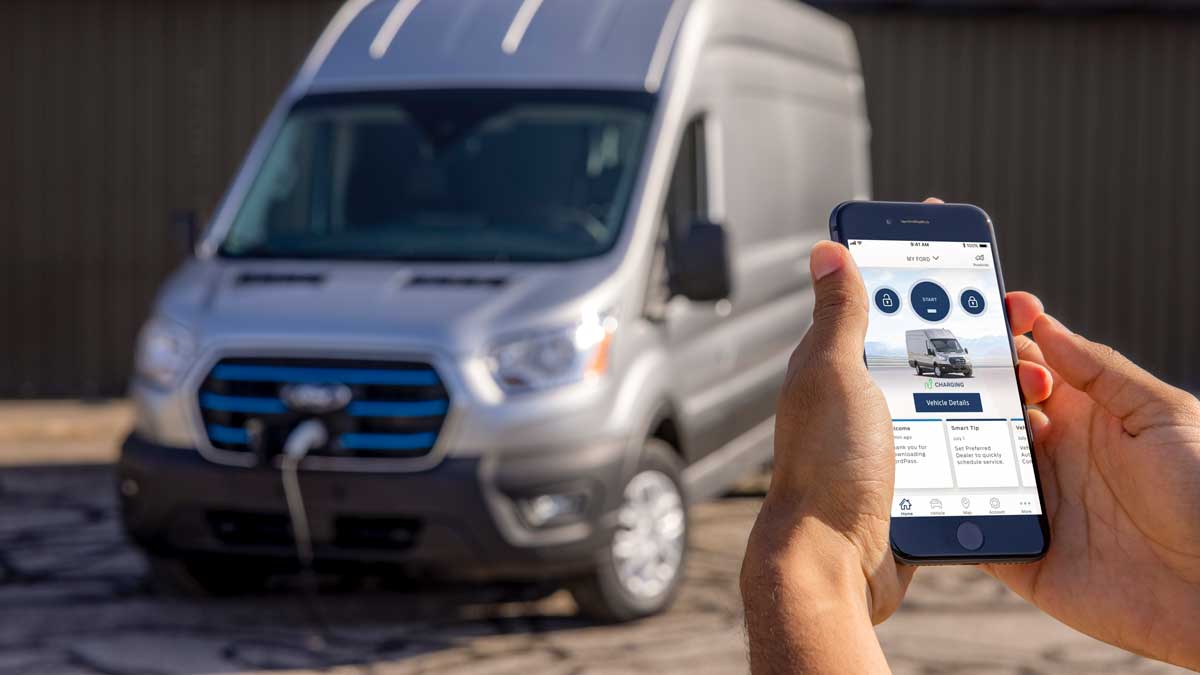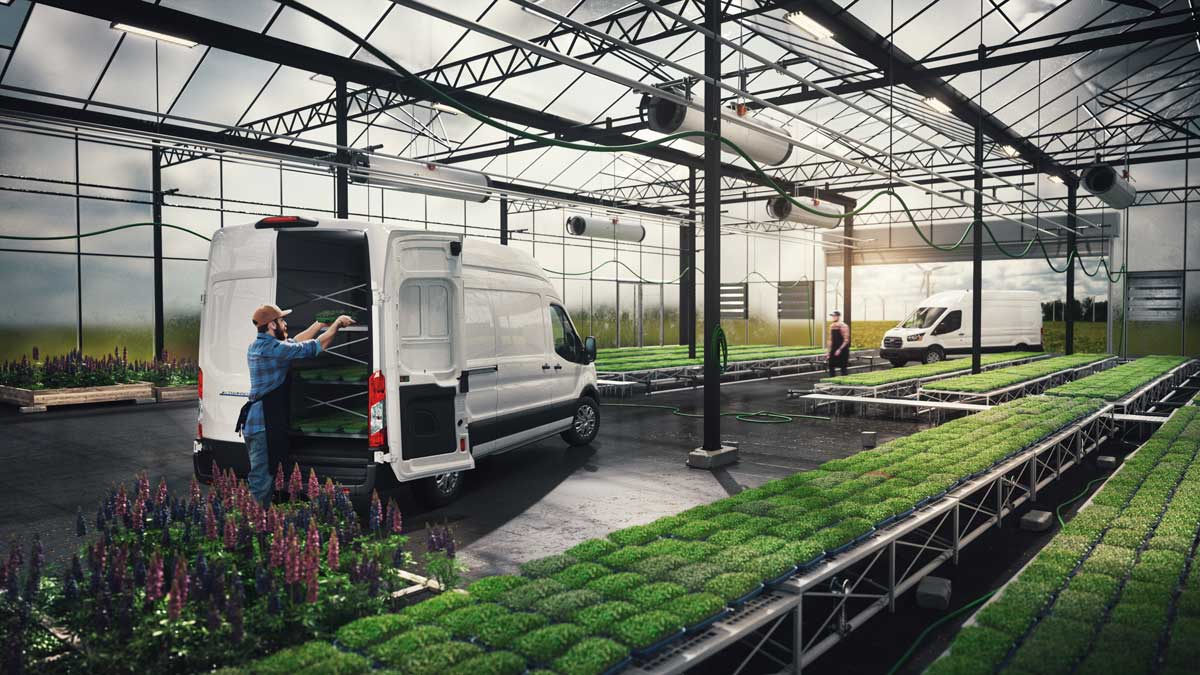Ford will enter the Australian EV market in early 2022, starting with a commercial all-electric e-Transit van, with at least another four to follow by 2024, the carmaker’s Australian arm announced on Tuesday.
Off the back of a newly extended $US30 billion investment into electrification including its massive new “Blue Oval” auto factory and dedicated battery research hub, Ford’s latest target is for electric vehicles to make up 40-50% of its total sales volume by 2030, and to be carbon neutral by 2050.
Ford said that its key strategy entering into Australia is to introduce electric version of iconic models that its customers know and love.
Unfortunately, this won’t, for the time being at least, include electric utes, or the Mach-E.
Though Ford recently started pre-production of its all-electric F-150 Lightning, Ford Australia CEO Andrew Birkic said it is not currently being considered for the local market. Neither is an electric version of the Ranger, Ford’s best-selling model hands down in Australia.
The Mach-E electric crossover is proving far more successful in the US than Ford predicted, and its focus would remain in that market for that model, particularly considering the silicon chip chain issues that continue to hinder many markets (although not, it would seem Tesla, which just reported another record quarter for deliveries).
That leaves Australia, for now, with the e-Transit.
That may seem somewhat less exciting for those after adrenaline-pumped driving experiences, but for the average fleet operator it will provide another much-needed option in a very limited zero-emissions logistics vehicle market.
On that note, Birkic highlighted a survey conducted by Ford that showed that 58% of businesses see a future for EVs in business operations, 63% would like to see more sustainable commercial vehicles in operation and 52% are likely to consider an EV for their next fleet purchase.
And echoing the recent “Rewiring” push that shows thousands in costs that can be achieved with electrification, Birkic says commercial customers will benefit from huge savings in servicing and fuel.
“We know they would be saving thousands of dollars of fuel each year,” he said. “With fewer parts, (less) routine servicing, and one-year service intervals… there would be less pollution, less noise, (and are) cheaper to run,” he said.
The new e-Transit will arrive in Australia in early 2022, shortly after its US launch. Ford says it will be offered with a 68kWh battery that delivers up to 317km range (WLTP), while its rear-axle motor delviers 430Nm maximum torque and 198kW power output.
“It will be the most powerful in the Transit range,” said Anna Hercan, product and retailing marketing manager at Ford Australia.
Seated on a long wheelbase, the e-Transit has a GVM of 4.2 tonnes, and payload capacity of more than 1.6 tonnes. Choosing the mid-roof option gives 11.3 cubic metres cargo space while the high-roof option gives 12.4 cubic metres.
Ford has given much thought to how well an electric Transit van will fit into existing fleets, also. With the battery stashed under the floor there is a lower centre of gravity, and the loading height is only 3cm higher than its existing RWD internal combustion engine cousin.
As with passenger EVs, delivery drivers are offered three driving modes. However, instead of the standard Normal, Eco and Sport, there is Normal, Eco and Slippery to assure driver safety on wet days.
Regenerative braking helps to recover energy in stop-start traffic and hills, and can be switched up to a stronger resistance level that slows the vehicle down more when the foot is off the pedal and activates the brake lights.

The van will have both AC and DC charging. This means that at night, it can be plugged into a depot AC charger and charged up to 100% within 8.2 hours at a top rate of 11.3kW, while during a lunchtime break it can be topped up from 15% to 80% within 34 minutes at a top rate of 115kW.
Connectivity thanks to Sync4 includes smart features like multi-phone pairing, “rich” navigation, a digital owner’s manual and Android Auto/Apple Car Play.
We are checking if Pro Power Onboard (the ability to power devices) will be an option for customers.
Servicing includes are being considered for commercial customers, while sustainability considerations include increased use of recycled materials thanks to a deal with Redwood Materials in the US, and onshore battery recycling/end-of-life options were being explored.
As for other electric models, the team would not give much away, other than that a plug-in hybrid Escape is definitely joining Ford’s offerings in Australia.
The e-Transit will be sold through dealers and pricing will be available closer to launch.

Bridie Schmidt is associate editor for The Driven, sister site of Renew Economy. She has been writing about electric vehicles since 2018, and has a keen interest in the role that zero-emissions transport has to play in sustainability. She has participated in podcasts such as Download This Show with Marc Fennell and Shirtloads of Science with Karl Kruszelnicki and is co-organiser of the Northern Rivers Electric Vehicle Forum. Bridie also owns a Tesla Model Y and has it available for hire on evee.com.au.


